A legacy isn’t something that’s easy to carry. It can’t be slipped into a pocket or fastened in the backseat of a car. It takes the trying hands of a devoted team, much like the one behind this year’s iteration of Maximum Exposure, the 30th annual School of Image Arts thesis showcase.
Led by five bashfully tenacious students, Joon-Young Lee (Financial Coordinator), Madison Chow (Student Communications and Social Media Coordinator), Tanvi Parikh (Project Manager), Amanda Michele (Web Coordinator) and Kenna Robinson (Creative and Curatorial Director), the collective goal of this year’s theme, Legacy, was to honour the contributions of past Image Arts students while making space for the achievements yet to come. However, it can’t be helped if the success has already begun. The team’s independent fundraisers, used gear sales, sponsorships and student grants came to a grand total of $35,000 – the highest amount ever raised in the school’s history. With these funds, the next generation of student productions will see a complete enhancement from their conceptual dawns to archival conclusions.
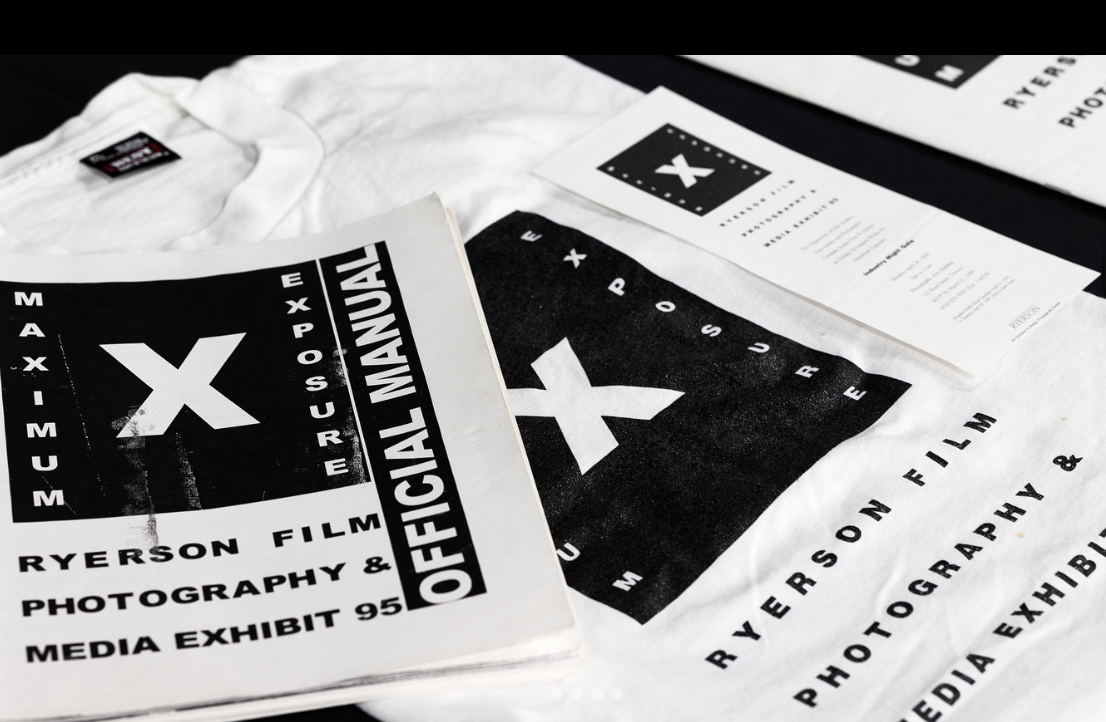
April 25th’s opening night welcomed over 500 eager guests to the School of Image Arts, but one admirable visitor flew across the country for the occasion – Narcena Wong, a former student and the 1995 founder of the showcase itself. During the awards ceremony, Wong disclosed the exhibition’s humble origin story and shared various relics adorned with Maximum Exposure’s original X-marked logo, which unintentionally caused a stir in its inaugural year.
Although the Image Arts curriculum has undergone a complete transformation over the last 30 years, its students only continue to bring a richer sense of curiosity to their storytelling practices…
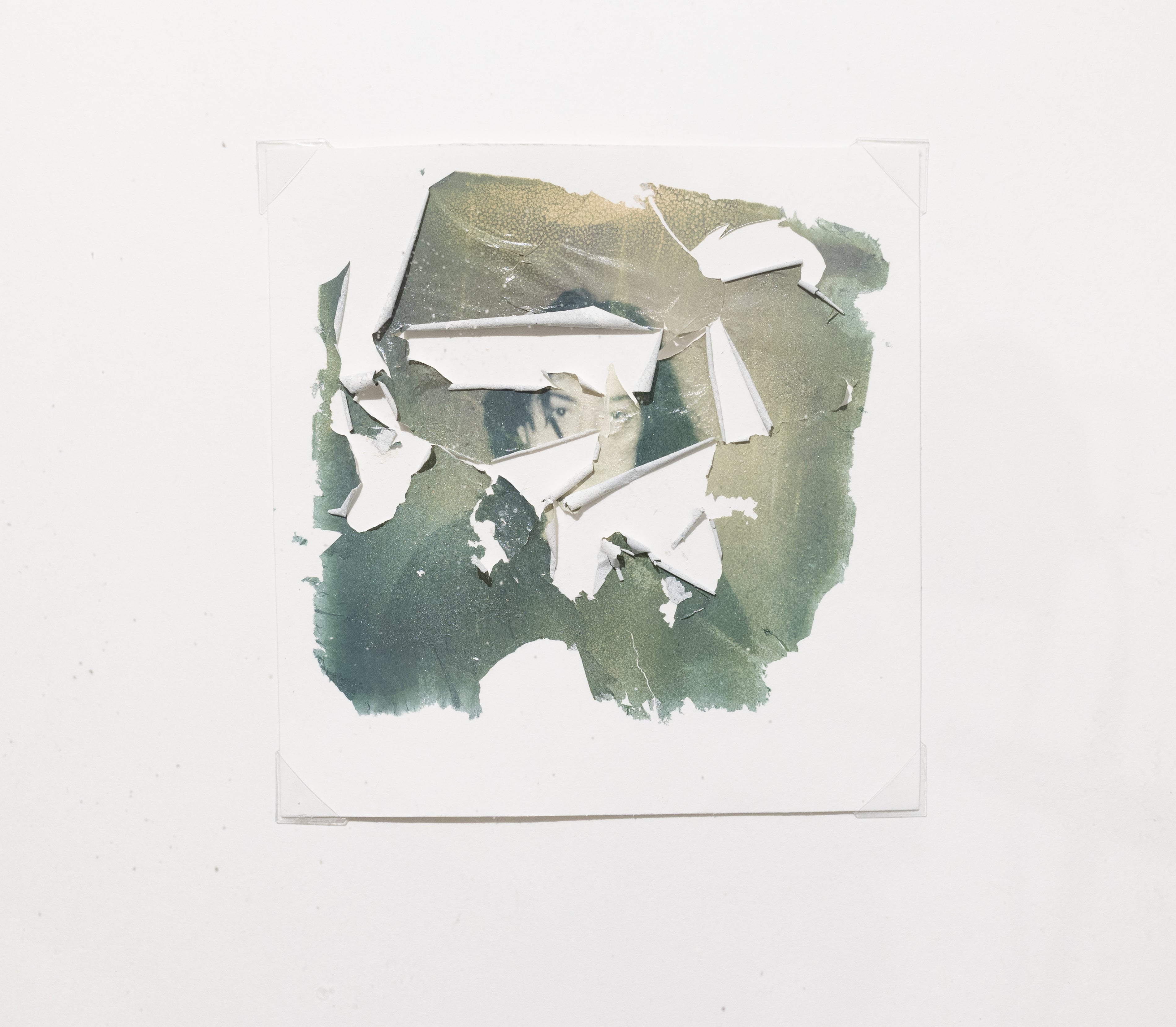
Maryn Western’s chemically experimental multimedia exhibit, Blood, Lead, and Tears, acted as a response and call to the public concerning a recent study involving mass-produced menstruation products. The 2024 inquiry led by Jenni A. Shearston discovered alarming traces of metals, including toxic concentrations of lead, cadmium and arsenic, in tampons from every tested brand. In an excerpt from Western’s artist statement, she explains:
“To explore this concept, I photographed a wide range of menstruating subjects who have used tampons on Polaroid film, degrading their image within chemical concentrations that reflect the amount of chemistry they have been exposed to from these products. Through the physical degradation of the portrait standing in for the subject’s body, one can investigate how the exposure to heavy metals within tampons has degraded a variety of menstruating bodies over the course of their lives, and how it can be visually represented.”
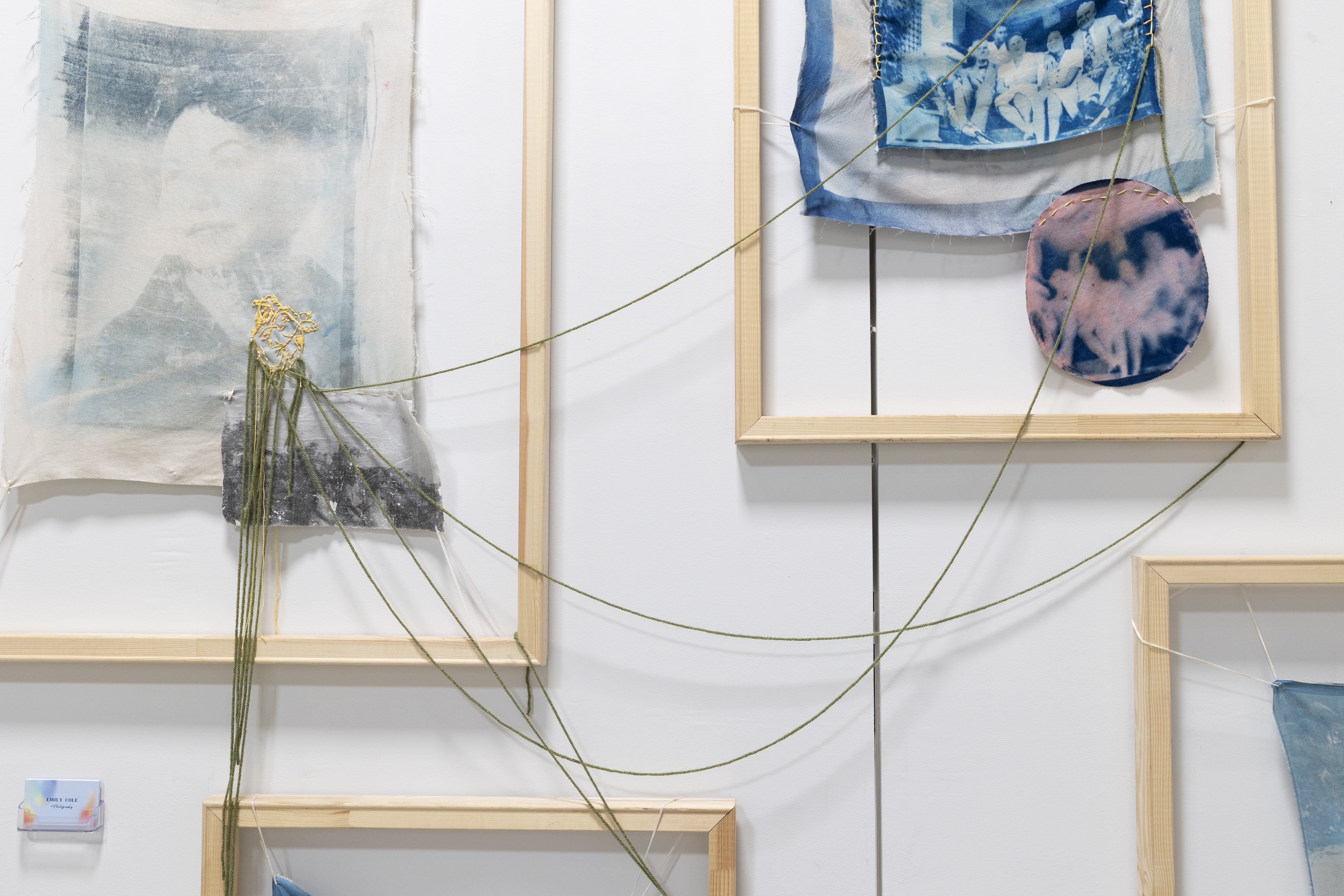
Hand bound and hung in a way that pieced history together, Emily Cole’s Threads of Her Time, explored the artist's own matrilineage and the complexities that shaped her great-grandmother’s life as an “illegitimate child” in the Caribbean. Textile collages of family photographs were printed, bleached and dyed on fabrics associated with feminine labour and domesticity, like bamboo, silk and cotton.
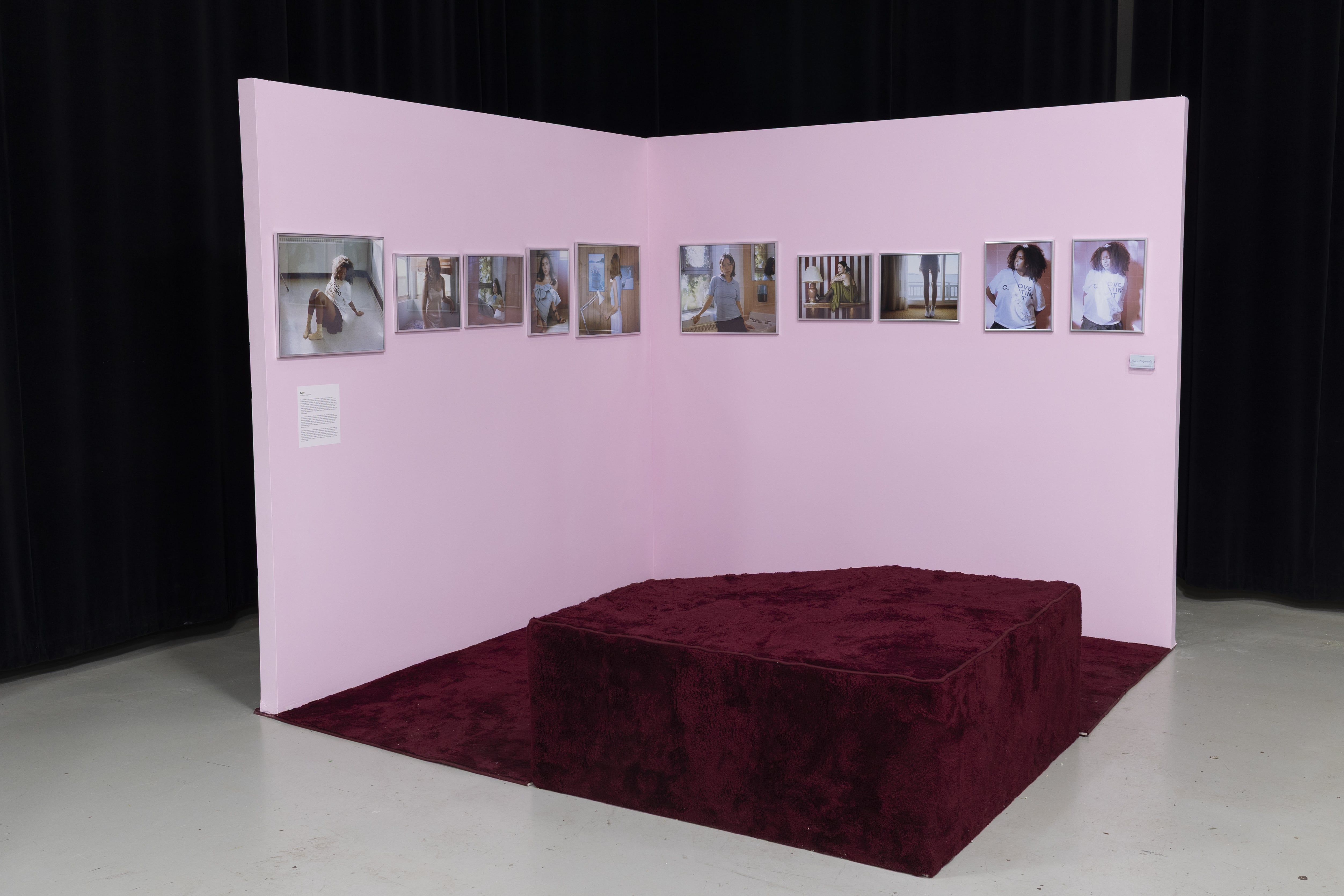
Refusing to conform to the white cube gallery standard, Grace Csizmadia’s immersive installation, belly, brought a grounded sense of familiarity to the otherwise bustling gallery. Chewing gum pink walls and a faux fur ottoman merged into the spilt wine coloured carpet, setting the stage for her lucent portraits that flitted between girlish and grown. The evening saw belly’s corner act as a revolving door of comfort for friends, who in turn became part of the exhibit itself.
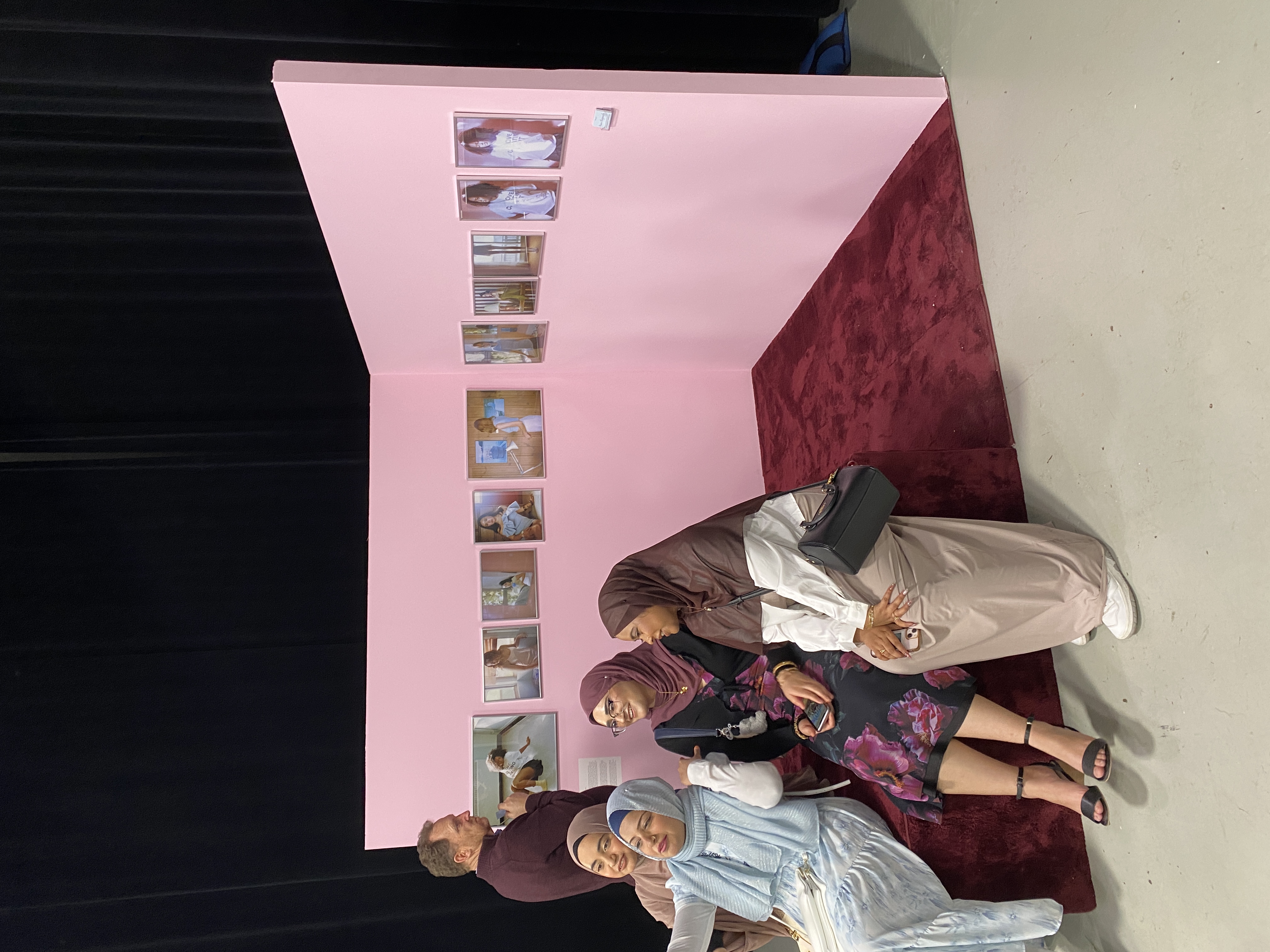
Notable Award Winners
IMA Special Collections Award
Sophia Markelj
Izzy Nastic
Angelica Borowski
Image Centre Publication Award
Joon-Young Lee
Image Centre Student Spotlight Award
Izzy Nastic
Image Centre Student Exhibition Award
Kenna Robinson
Smokestack Studio Residency Award
Kenna Robinson
Marion Giesler Photography and Digital Communication Award
Joon-Young Lee
SF Fourth-Year Award in Photography
Sai Bagni
Toronto Image Works Best in Show Award
Maryn Western
In Conversation with Kenna Robinson
Taking on the role of Curatorial Director for Maximum Exposure: Legacy comes as both a stepping stone and a leap for Kenna Robinson, an earnest leader and decorated recent graduate of the School of Image Arts. “I was lead curator for the third-year showcase last year, which is a subsection of MaxEx that also happens annually but has their own team and a different set of work to showcase. That was my first time curating in any sense, so this role is a step up from that, although it's a lot different. [The third-year team] doesn’t handle any finances or anything like that – it's very much a half-year-one-semester kind of project, but with MaxEx we’ve spent a full year essentially preparing for opening night.” When asked about the initial lure of curating, Robinson's response was intrinsic. “It’s a different creative muscle that I hadn’t explored. I produced my thesis work during the fall semester, so it’s been a good shift to take on this whole different challenge. It’s kept me on my toes.”

Like many of Robinson's pieces which have been featured in HUES, her work often explores abstract expressions that can only be achieved through the bodily integration of analog photographic processes. “Pretty much all of my work, up to this point, is grounded in performance even though it’s not ever live. The creation of all my work, especially Corporeal, is based in the momentary act of making and the result of that action. What artists were doing during The Conceptual Art movement of the 70s, was very based in movement, based in time, and it only really exists through documentation. Like Richard Long’s A Line Made By Walking, where the artist walked back and forth over a stretch of terrain to create this visible line in the earth and then documented it. We talk about this all the time in photography but the work isn’t the photograph it’s the performance of it. I’m really drawn to that embodiment of art practice – using the available space and the body to produce visible action and mark-making on the world. I find photography to be a really exciting way of exploring that, especially cameraless processes where you can touch the surface and medium. Like with the lumen printing process for this project, it required direct contact, a body being inflicted onto the medium.”
As uniquely refined as Robinson’s craft may seem, her hands-on approach to photography only began during her time at TMU. “I learned all about cameraless processes here. I was doing digital stuff before and that’s kind of what my first-year practice looked like. Then in my second-year I took a print class where our first assignment was to create a lumen print. Eliot Wright, the prof who was teaching that class, is a very hands-on-process-oriented type of person. He’s really great, my whole cohort is very competent at printmaking because we all had him. That class was the first time I learned about the possibilities of tactile processes. In the following semester, I took a class on historical processes which exposed me to cyanotype. Having those resources available and connecting with the visual and conceptual resonances of the medium just set me on a path that I don’t think I’ll ever come off of.”
As both an artist and someone managing a space of artists, there’s a certain kind of shared responsibility that Robinson felt the need to uphold. “For an exhibit like MaxEx, something students have essentially been working towards for four years, it’s important to me that the space they’re given is suitable for the piece itself. Like finding rooms for people to have their projections displayed or spaces viewers can walk around in. Being able to show someone’s work in its full form is important to me and I think that’s something all MaxEx curators should have. But beyond that, understanding the core values of the projects is really important when you’re the curator who arranges them together. Thesis projects are completely up to the student so the work varies. For example, we have editorial fashion projects and deeply personal self portrait work. Placing them next to each other would be a disservice to both projects and I’ve tried to take that to heart as best I can. There’s often a lot of self and family exploration with some of the more conceptual work, whereas the more studio-editorial work often has a critical edge which is interesting. I tried to create a path for the viewer so that moving from one project to another isn’t so jarring. There’s a sense of continuity.”
On that note, Robinson reveals her postgraduate plans to further enrich her practice at NSCAD later this year. “Most MFA programs in Canada are cross-disciplinary, so myself and another Image Arts graduate will be representing the photo cohort for our incoming year. There’ll also be painters, textile makers, a bunch of different people who work with different materials which is the reason why I want to pursue a graduate degree. To open up beyond photography, I’m really excited for that.”
